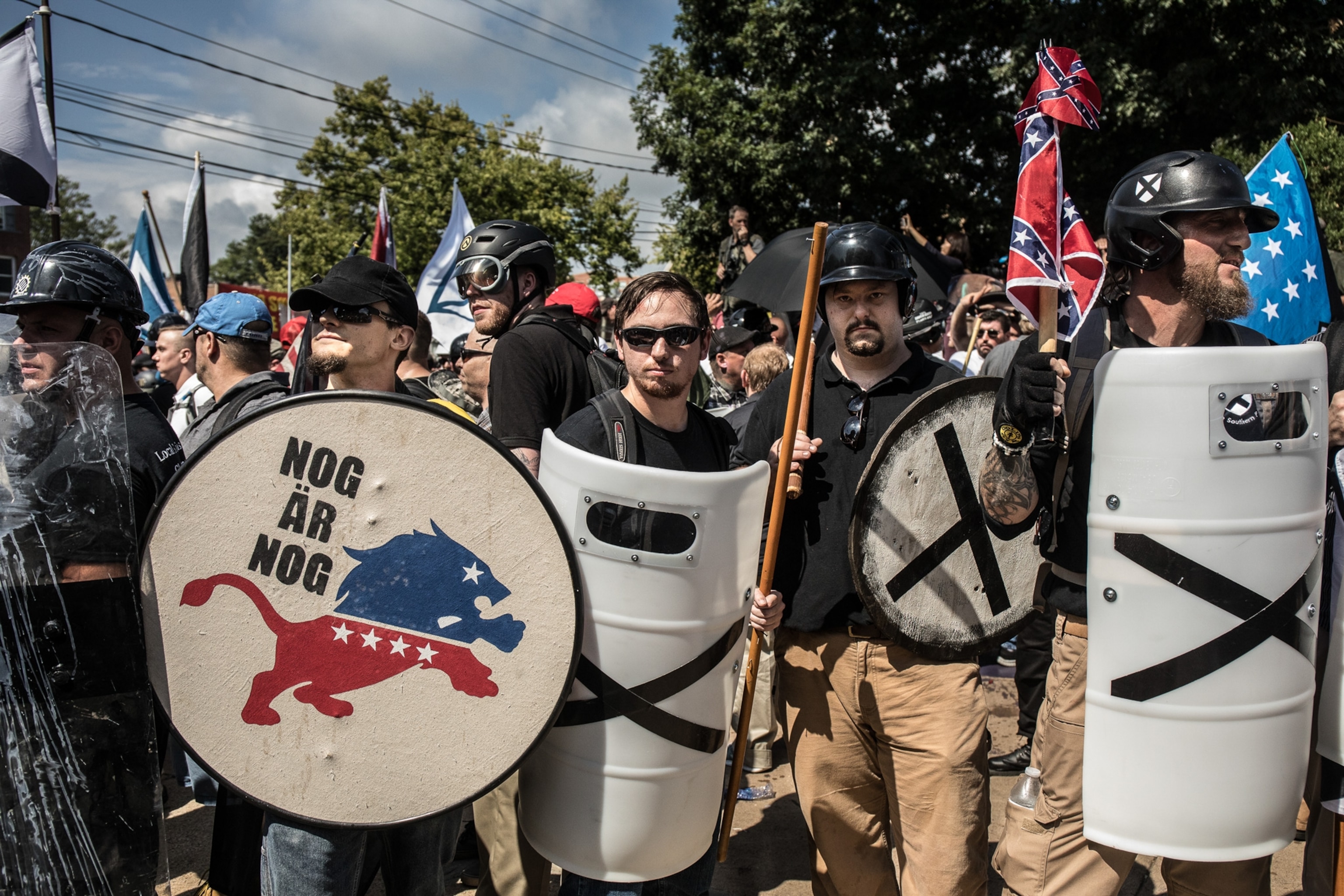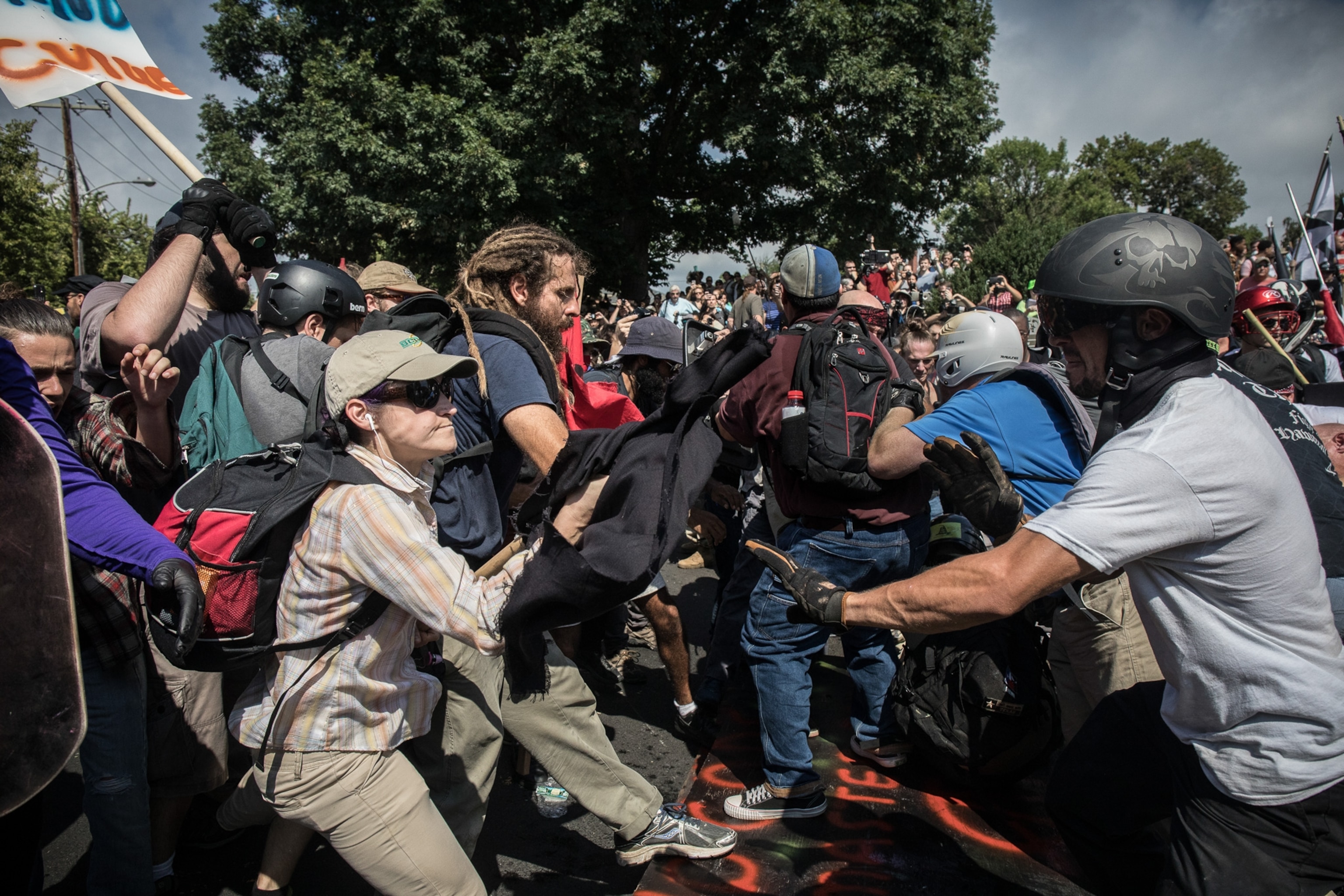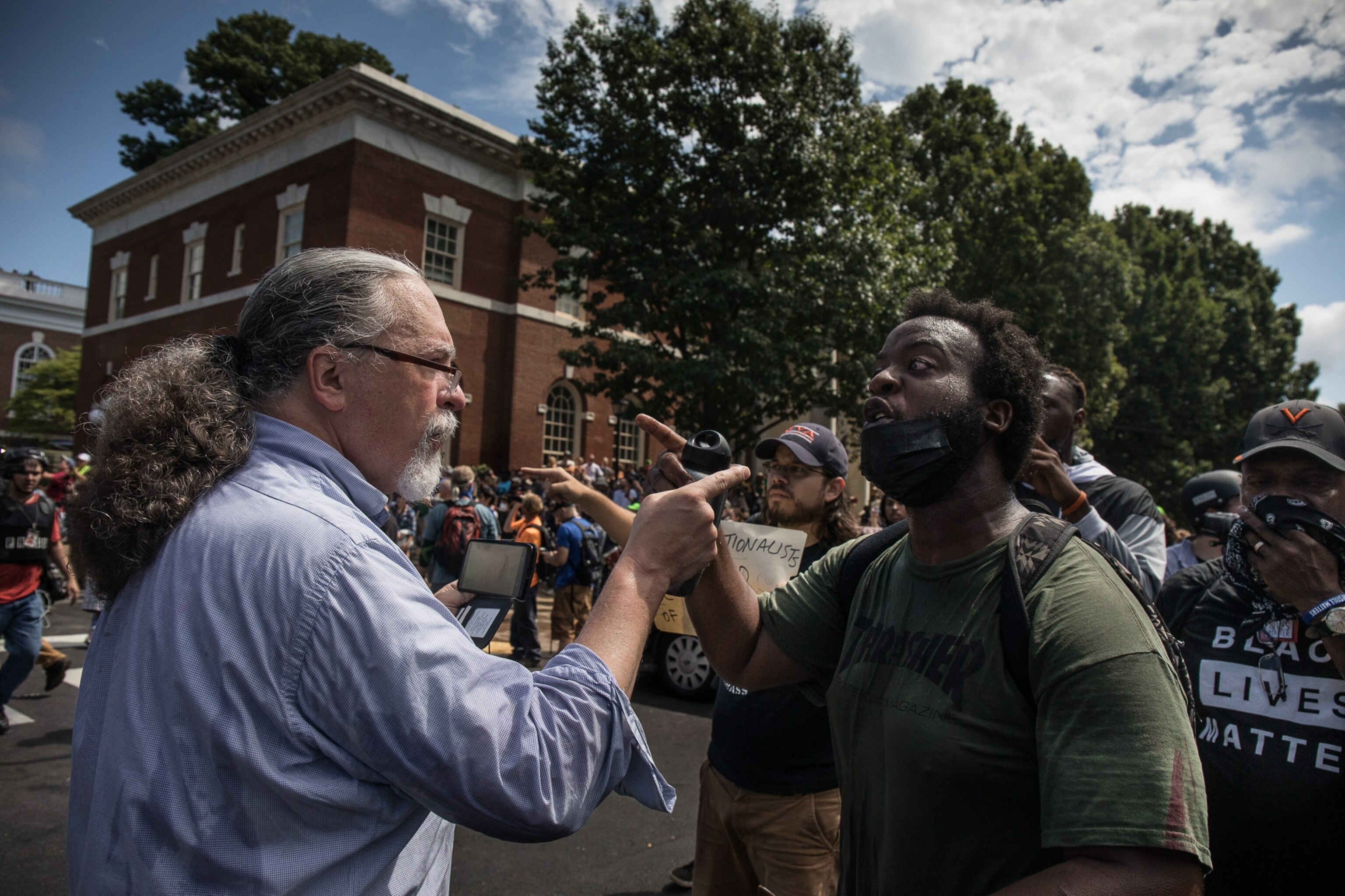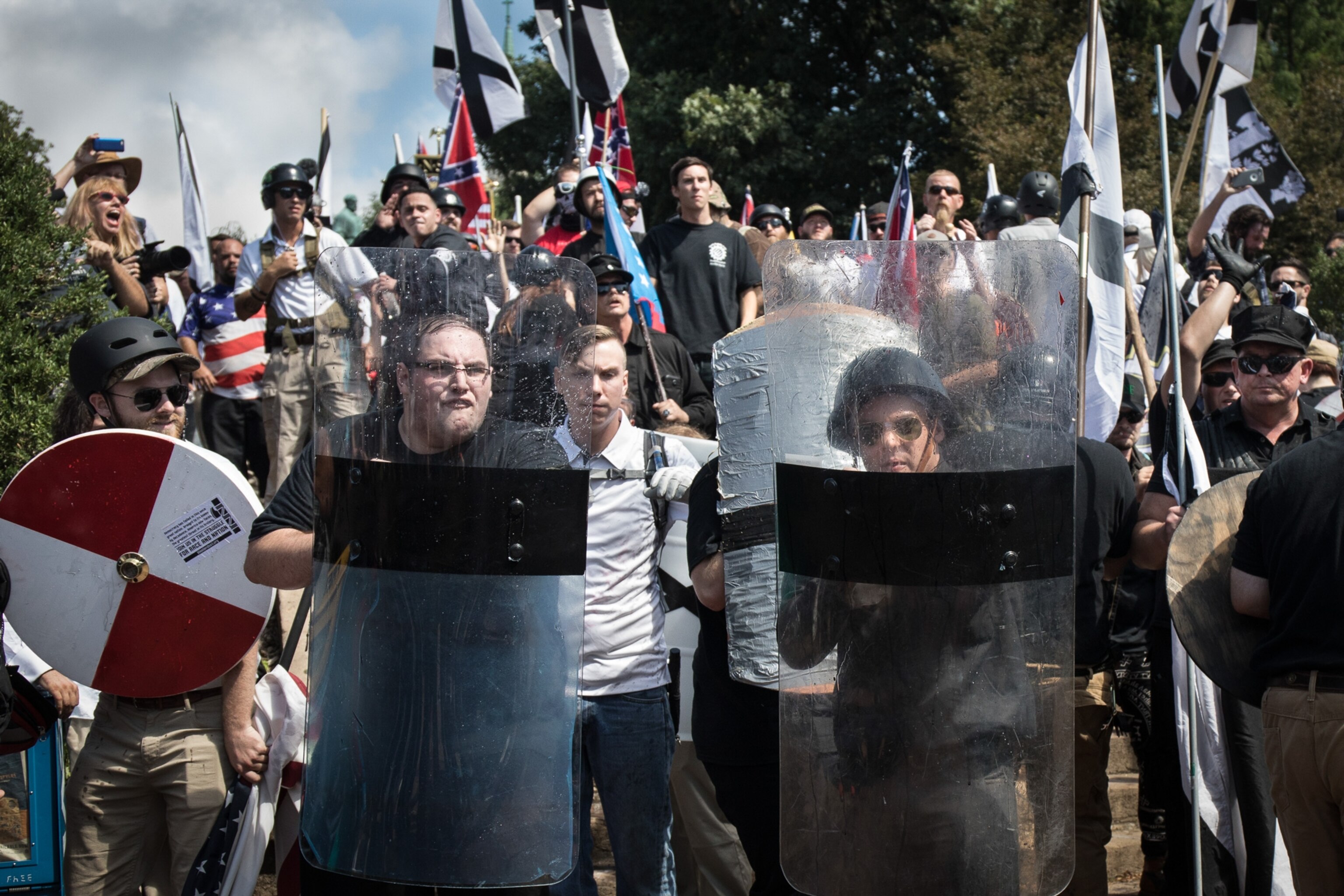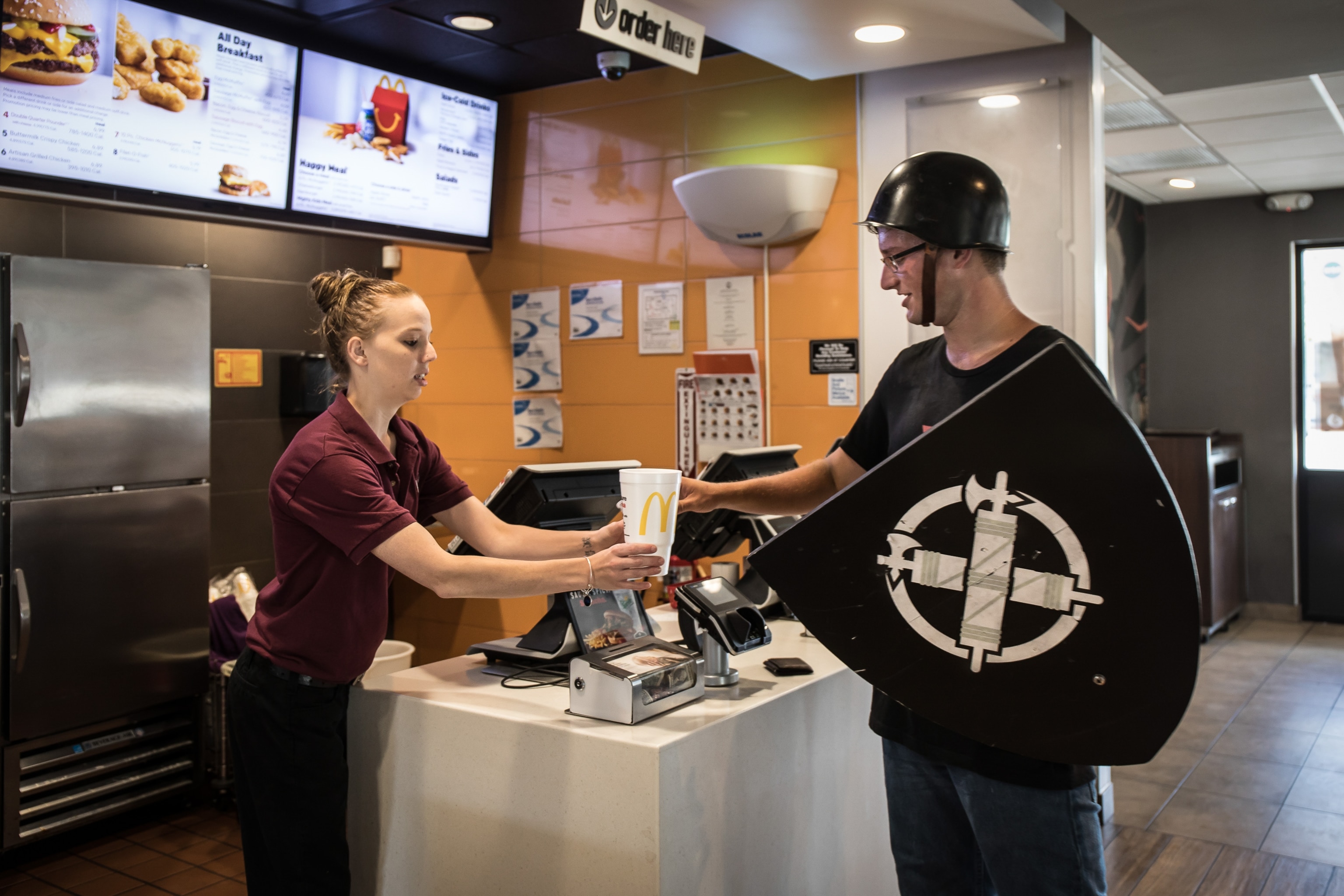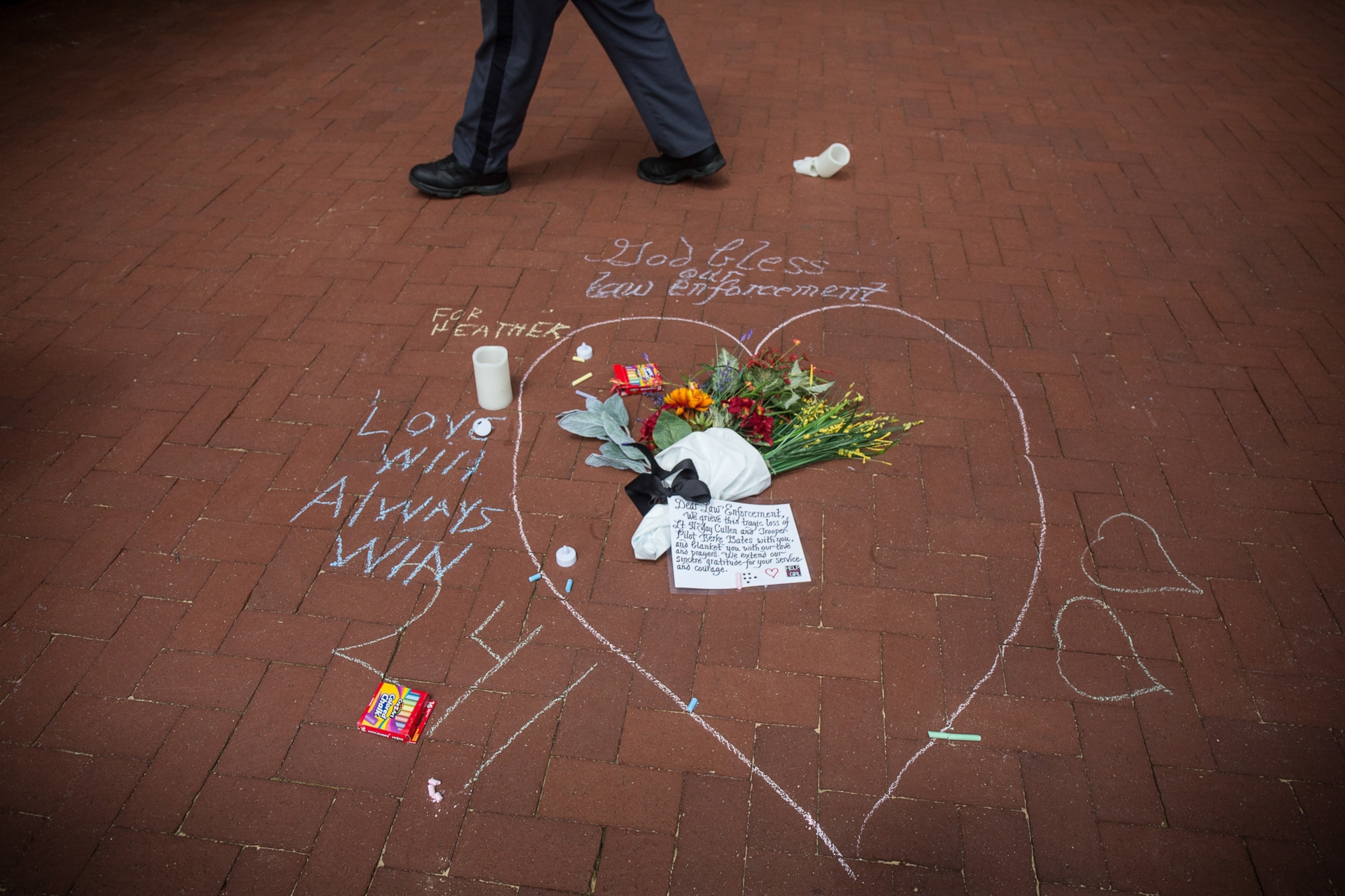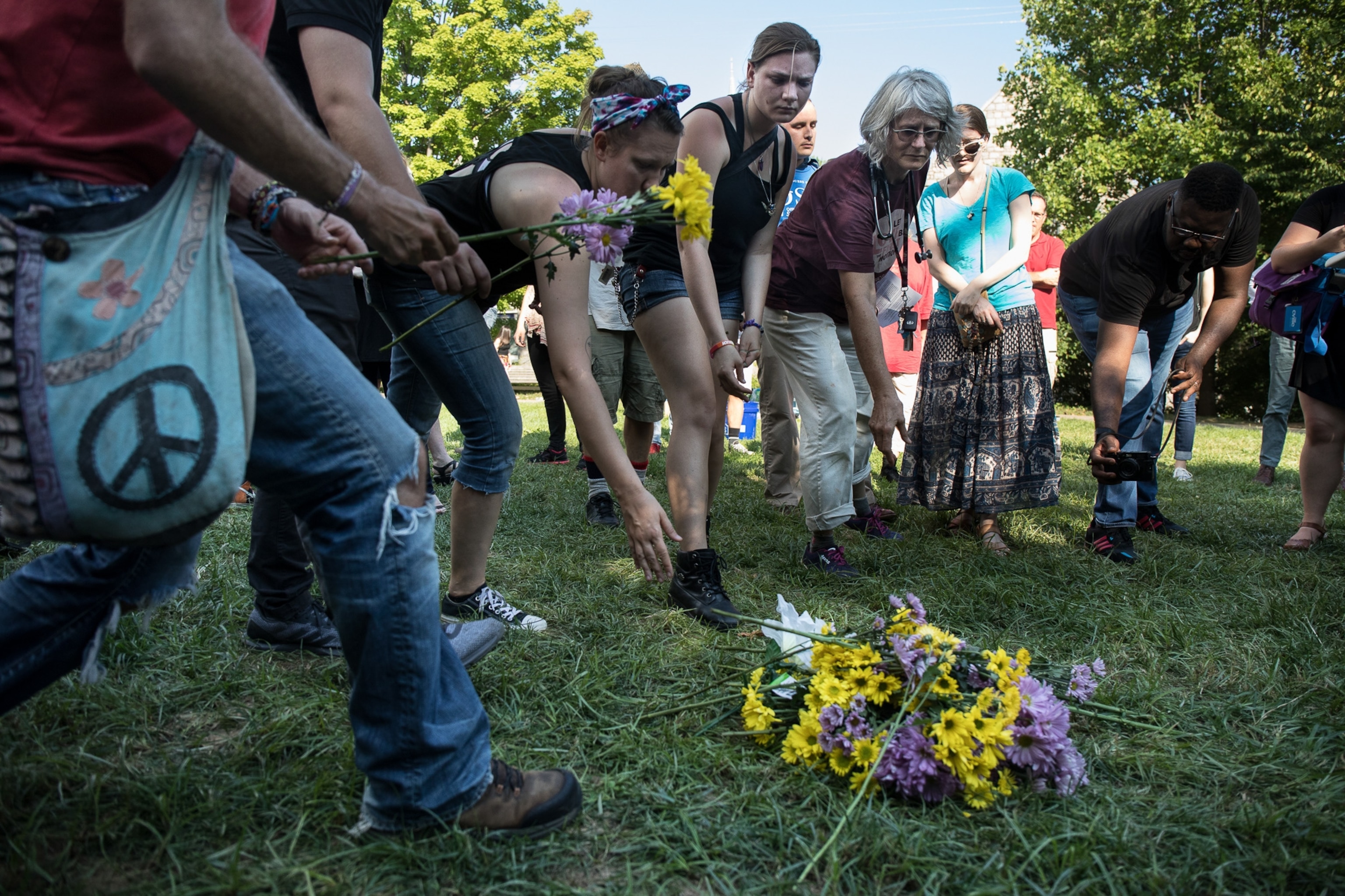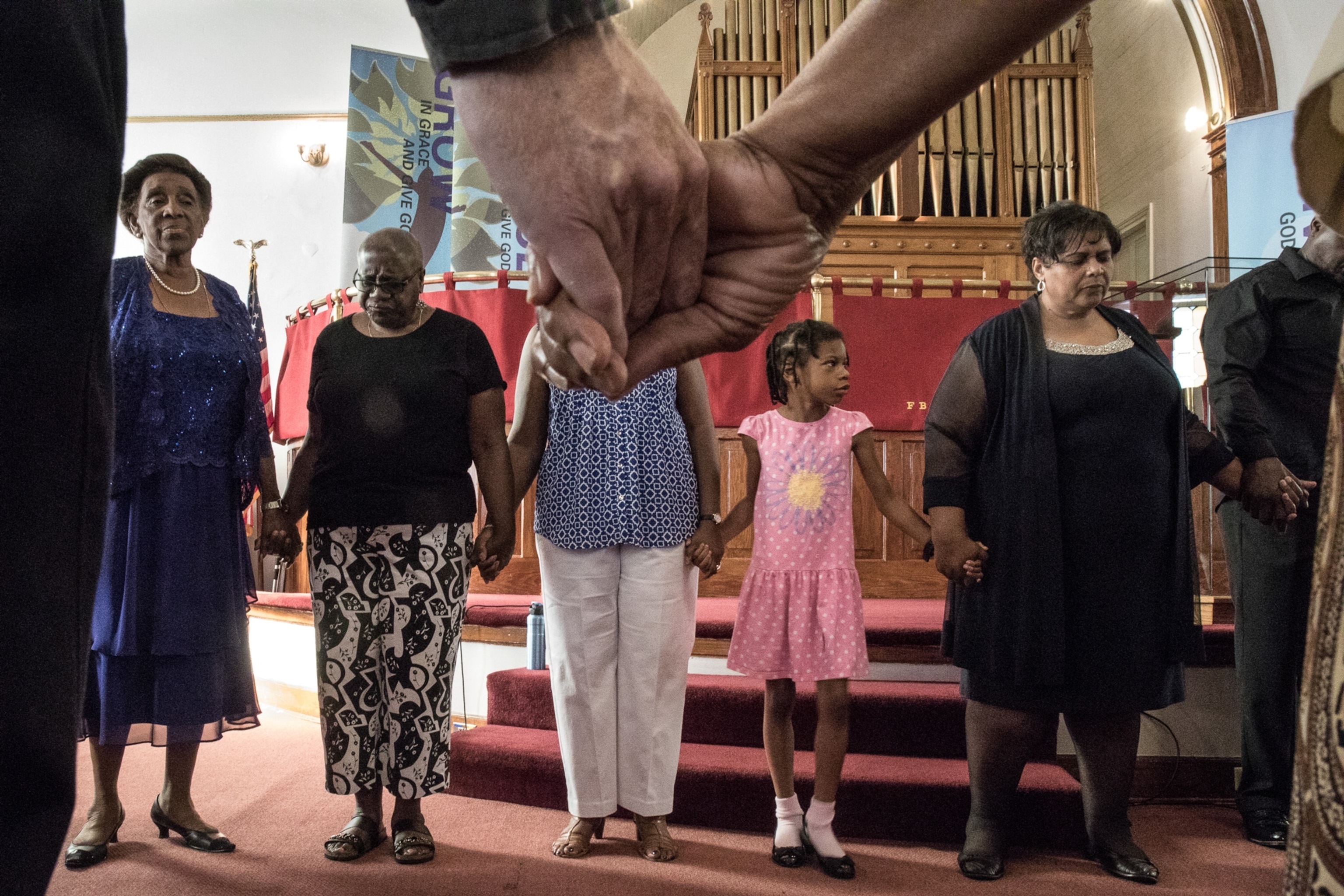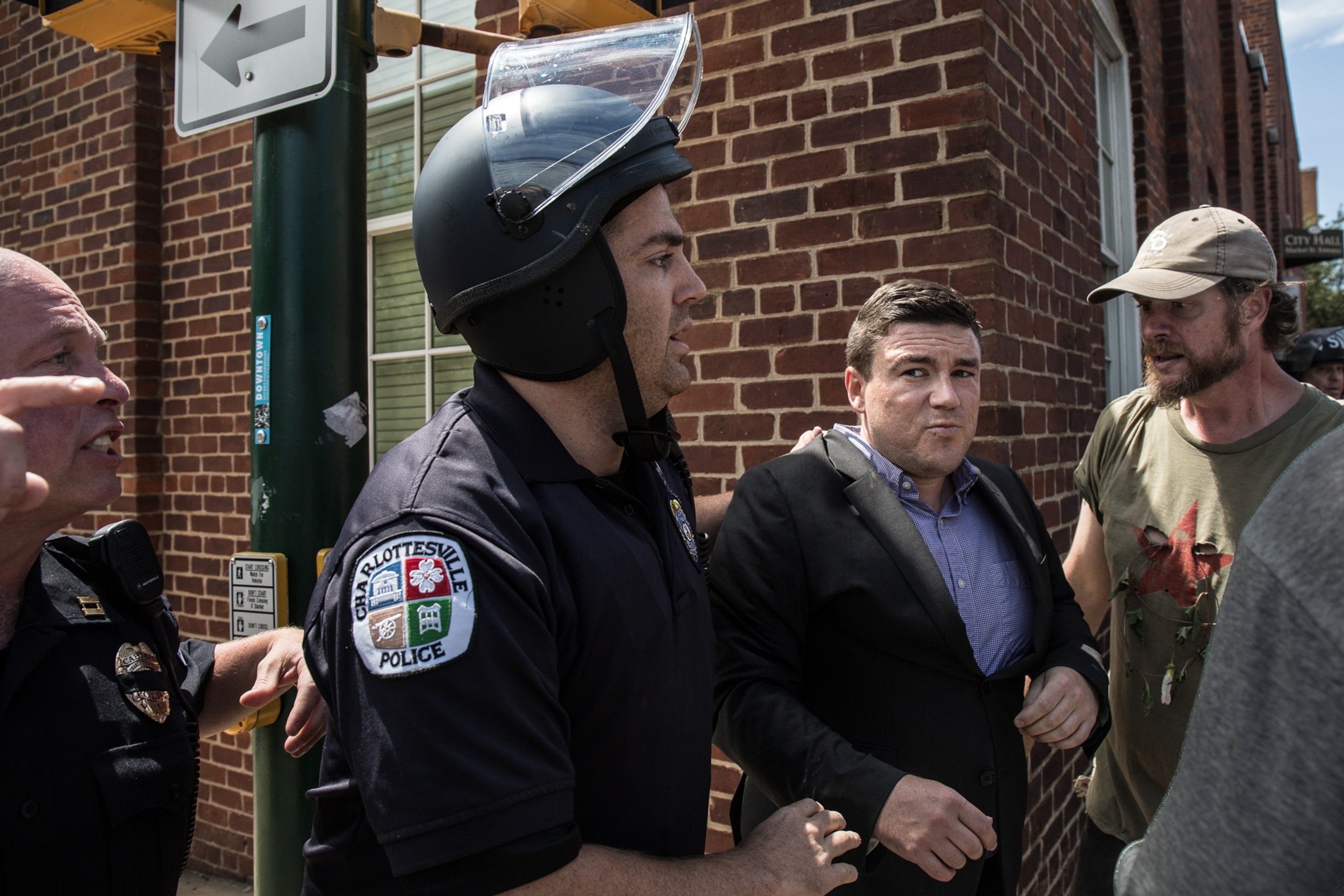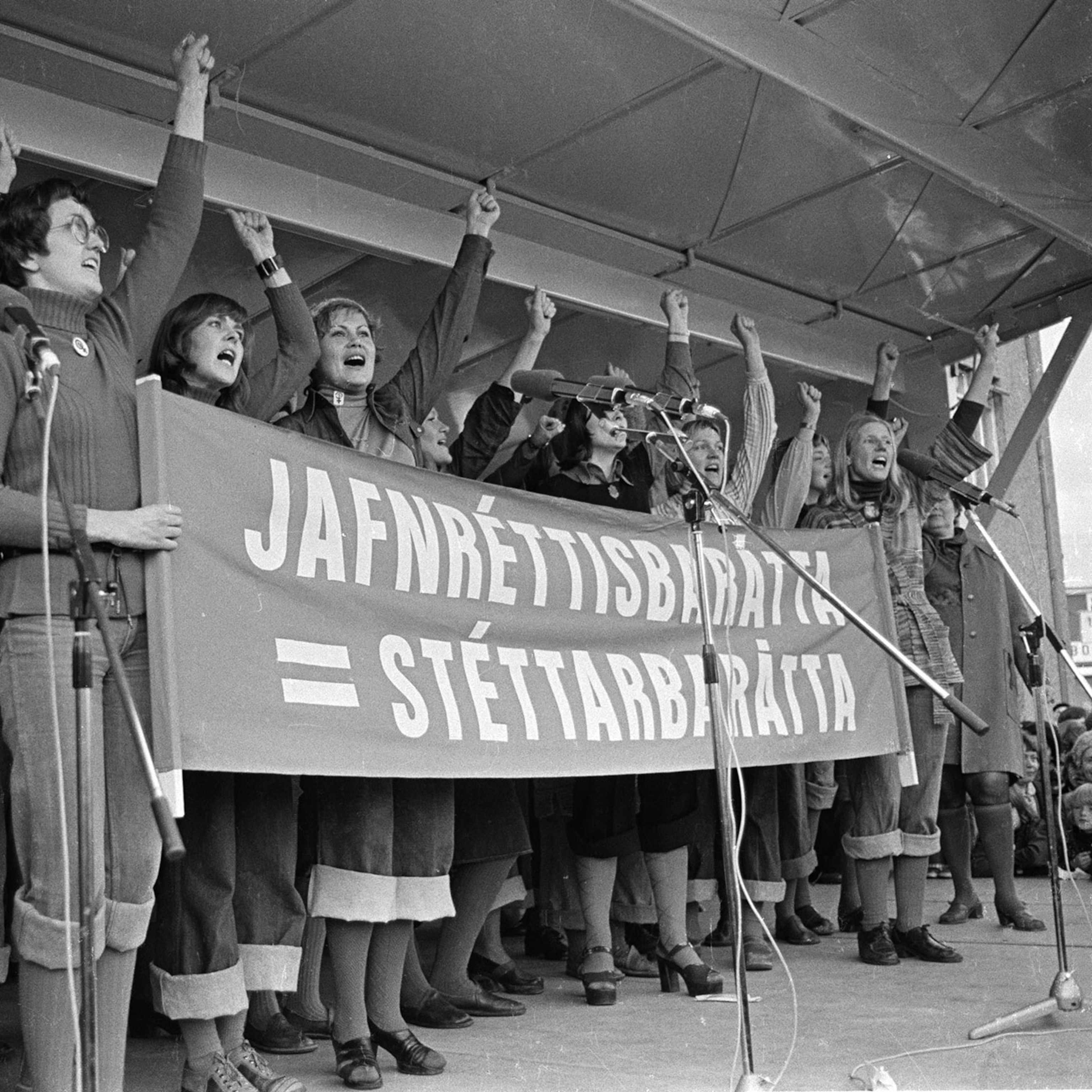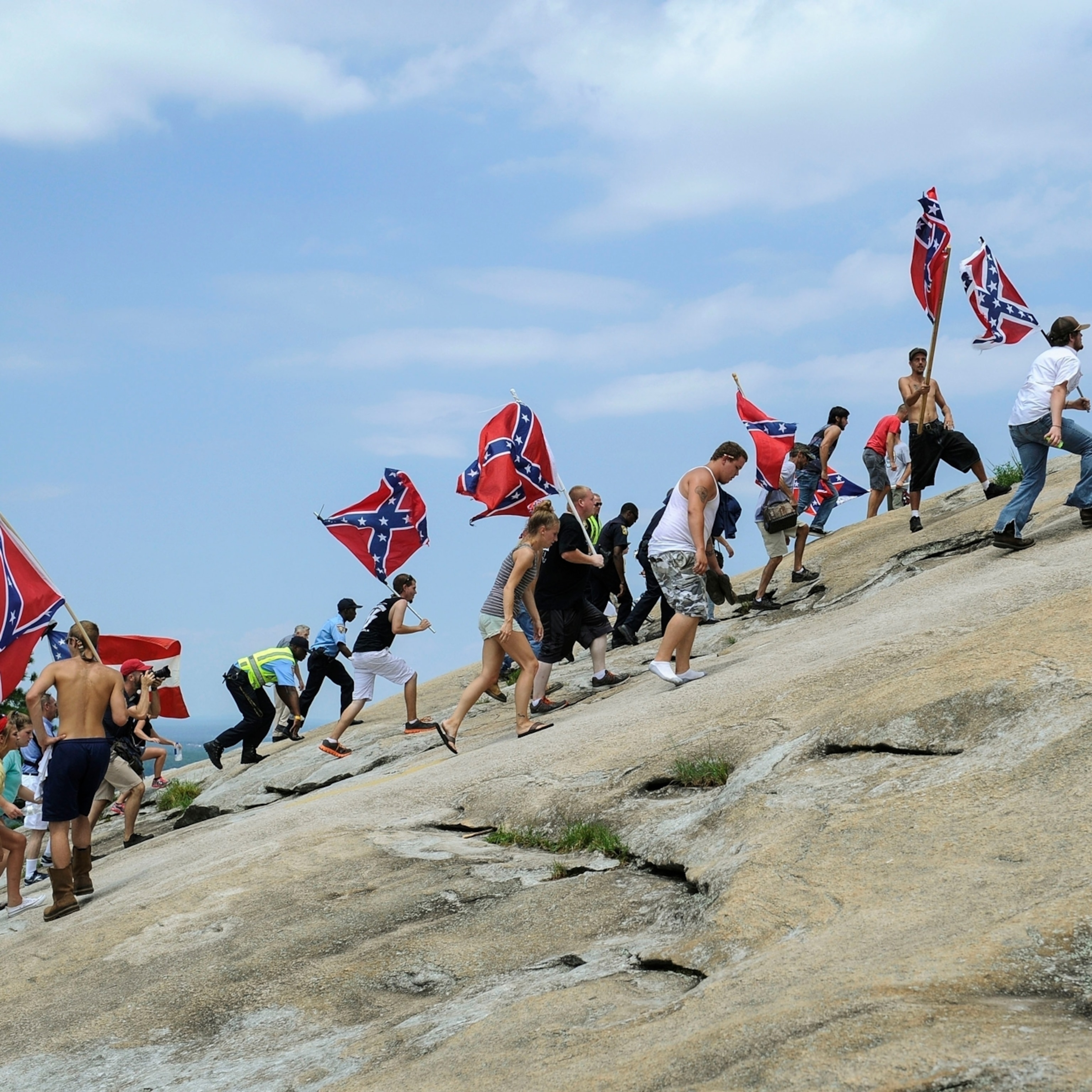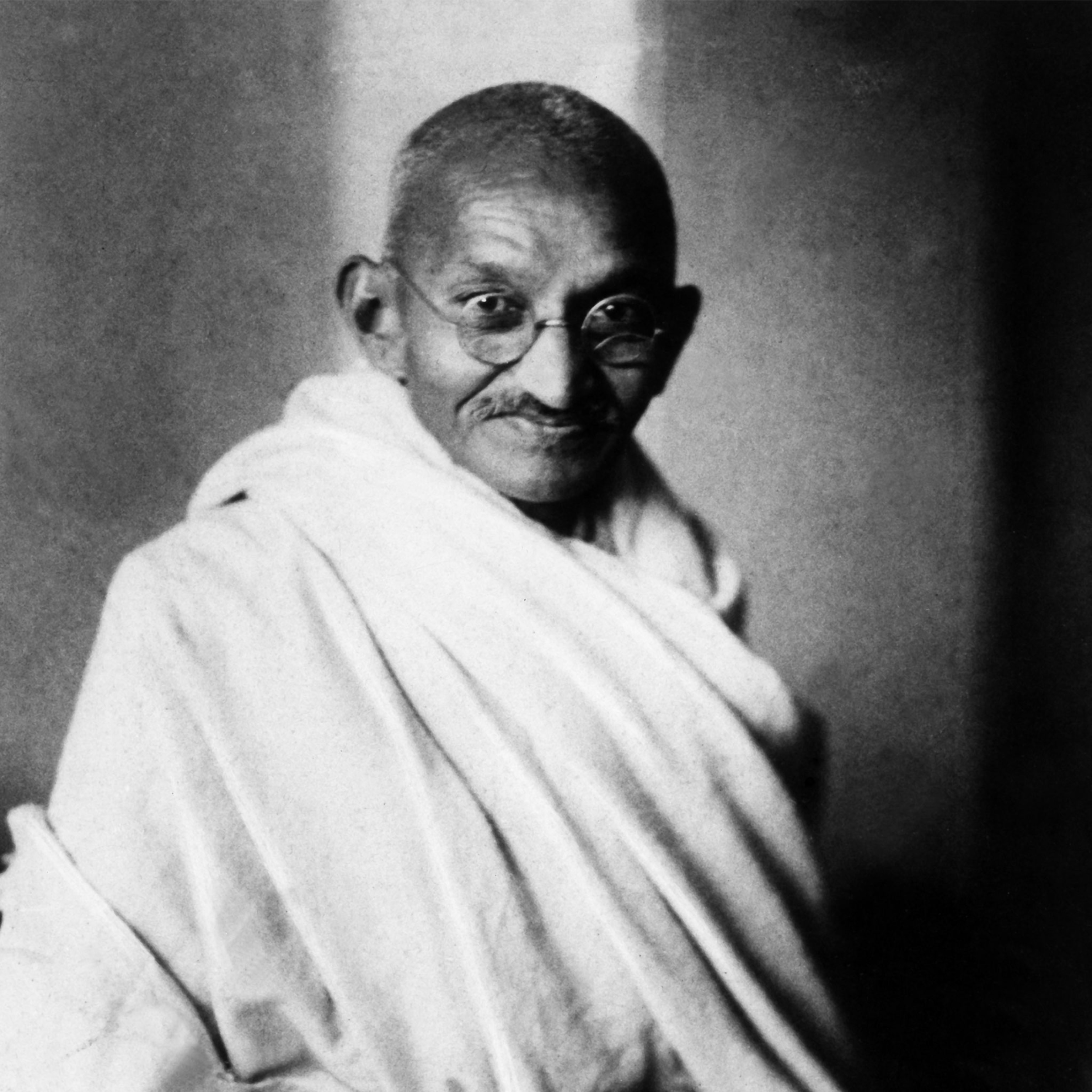Being in Charlottesville Broke My Heart. It Also Filled Me With Hope.
Katie Couric, who has deep ties to the city, releases a video showing her three tense days and nights in Charlottesville. Her account of the experience is also in the essay below.
Last week I began filming a six-hour documentary series for National Geographic examining the pivotal social, demographic, and cultural changes that are currently tearing us apart. For the first episode, I’m exploring the national conversation taking place over monuments and statues; who and what we memorialize, what they symbolize and whether we need to reevaluate how we tell the story of our nation.
I knew Charlottesville was at the epicenter of the debate because of the statue of the man at the center of town: Robert E. Lee. There's been so much said and written about what happened there, I felt I needed to give my own account of my three days in Charlottesville. It's become the symbol of where we are, as Americans in 2017, and it breaks my heart. But it also fills me with hope.
This was not just another assignment. This was personal. I graduated from the University of Virginia, and my late sister Emily was a state senator in Charlottesville from 1996 until she died of pancreatic cancer in 2006. The Emily Couric Cancer Center at UVA is a testimony to her commitment to ensure cancer patients in Virginia get the the best possible care. While I was down in Charlottesville, many people told me how much they missed her voice, especially during such a difficult time.
My first stop last Thursday was Emancipation Park, until recently named Lee Park.
On this warm August morning I’d come to meet some of the people behind the battle over the statue over Robert E. Lee. Zyahna Bryant is a 16-year-old Charlottesville High School student who started a petition on change.org more than a year ago to take the statue down. Bryant told me the statue is a symbol of slavery, plain and simple, and it made her feel uncomfortable and unwelcome in her own town. As we looked up as the massive bronze figure of Lee, riding his horse Traveller and literally put on a pedestal of granite several feet high, I tried to understand what it was like to be a young African-American teen living in a place where a man who fought to defend the confederacy and the institution of slavery loomed so large.
Bryant inspired a lot of people. Among them, Don Gathers, a 58-year-old African American grandfather who moved to Charlottesville from Richmond about five years ago. Motivated by Zyahna’s activism, he decided he would not only join her cause, but start the Charlottesville chapter of Black Lives Matter. When the Mayor of Charlottesville responded to the petition calling for a city commission to examine the issue, Gathers was quick to volunteer.
For Gathers, the statue is a lingering symbol of slavery, white supremacy and black oppression, especially since it was erected in the 1920s when the KKK was on the rise in Virginia and brutal discrimination was part and parcel of the Jim Crow south. For him, the statue of Lee was a constant reminder, while much of Charlottesville’s black history has been omitted from the town’s memorial landscape. Just a few blocks away from the Lee statue in historic Court Square, for example, a small plaque marking the slave auction block is barely noticeable on the sidewalk. When you look at General Lee, Don told me, you look up. When you look at the plaque, you look down. He is convinced this is not an accident.
Frank Earnest, a Heritage Defense Coordinator for the Virginia division of the Sons of the Confederate Veterans, had a very different view. He traveled from Virginia Beach to tell me that he disavowed the “Unite the Right” rally that was scheduled for the next day because he felt the participants had co-opted the symbol of Lee to advance a very different agenda. But he made a passionate argument for keeping the statue in place, saying it paid homage to the Southerners, and his very own Confederate ancestors, who sacrificed their lives. For him, it represents his heritage and history, and is a memorial to war veterans. He claimed the Civil War was about “states’ rights,” not a battle to preserve slavery, and while he conceded slavery was a part of it, he said it wasn't the primary reason for the war.
Historians refer to this as the "Lost Cause" narrative, which argues the losses of the Civil War were so enormous the South needed to create a story of heroic struggle, honor and sacrifice to romanticize the Confederacy and minimize the role of slavery to justify their actions. Historians say this false narrative has taken hold in the American imagination as absolute “history” when it is really “historical memory,” perpetuated by early writings, memorials, art, popular culture and stories passed down from generation to generation.
The day before the rally, I also spoke with two history professors from my alma mater: one white, one black. They both believed the statue of Lee should remain and be used as a teaching tool (the City Council voted 3-2 to remove it) but only if along with the statue (one suggested literally taking Lee off his pedestal) another memorial is erected, perhaps to honor the sacrifices of the many black men from Albemarle County who joined the Union Army. Finding historical figures without flaws, one argued, is an impossible task. Others, including Mike Signer, the mayor of Charlottesville (who voted against the removal measure), have also called for context to be added, such as signage and a memorial that would honor the Civil Rights movement and the struggle for equality.
As Saturday approached, I got the sense this rally was going to be much bigger than anticipated, especially after the Southern Poverty Law Center’s warning it was set to be largest hate gathering in the United States in decades. UVA Hospital had cancelled elective surgeries for that day in the event of emergencies. There was a strange alchemy in the air of that beginning of the school year excitement mixed with foreboding and unease.
Friday night at an interfaith service at St. Paul’s Episcopal Church, right across from the UVA Rotunda, people of different religions packed into the pews to hear messages of love, the need to conquer hate, and the importance of standing up to bigotry. Many had come from across the country to participate in counter protests and were spiritually preparing themselves for the rally. Cornel West, a well-known civil rights activist, gave a fiery speech from the lectern. Reverend Traci Blackmon, who had traveled from Ferguson, Missouri asked the crowd, “Where have all the dreamers gone?” As the congregation began to sing “This Little Light of Mine,” we got word that members of the so-called “alt-right” were nearby lighting tiki torches, preparing to parade across the UVA grounds—as they’re called—to give Charlottesville a preview of Saturday’s rally.
I was speaking with Dr. Cornel West who was sharing with me his impressions of the day. He said he had never seen so much hatred in the eyes of his fellow human beings in his life.
There were scores of men—my mom would have called many of them “clean-cut”—wearing khakis and polo shirts, moving through Thomas Jefferson’s Academical Village and the heart of the University, chanting “You will not replace us!”, “Jews will not replace us!” and “White lives matter!”
On the other side of the lawn, in front of the Rotunda, a smaller group of counter-protesters were making a human chain around the statue of Thomas Jefferson chanting “Black Lives Matter!” Soon the “alt-right” descended down the stairs in an intimidating rush, surrounding the circle of protesters in the center. Within minutes, altercations and chaos broke out. Objects, including a fiery can from the tiki torch, were thrown in the air.
Meanwhile, it was unclear if the sea of torches were headed to the church. People inside were directed to go out the back door. Elderly women were helping each other make sure they got to their cars safely. Everyone was extremely nervous.
The next morning, as the sun rose over Charlottesville, the clergy met at First Baptist, the most historic black church in town. Professor Cornel West rallied the group who were determined to stage a peaceful counter-demonstration outside the park as a rebuke to the rally participants. “How sweet it is to be in the struggle for justice,” he began. His talk was about love for all: black, white, gay, bi-sexual, Native American. “I am who I am because somebody loved me,” said West. “And Justice is what Love looks like.” He embraced Don Gathers, who’s also a deacon at First Baptist, and who was preparing for the day.
Soon most of the congregants filed out of the church singing spiritual hymns and civil rights anthems as they processed through the quiet streets toward the site of the rally. Gathers walked in front, ready to meet his antagonists, striding with purpose, eyes straight ahead. A smaller group of pastors followed, arms linked, determined and silent as they passed through the streets. A woman ran out of a shop to watch and mouthed “thank you” as they passed. They walked right to the front of Emancipation Park where they soon encountered scores of mostly men holding shields and waving flags.
Around 10:30 a.m. the crowd grew larger and there was a lot of tension in the air. Men in camouflage, many with automatic weapons strapped to their backs, lined the streets. Their commander told one of my producers that they were a group of “volunteer militia” there to protect the right of both sides to exercise free speech. “We are here to represent the American middle,” he said. This was still an hour and half before the actual rally was supposed to begin.
Soon a range of far-right groups filed into the park including various so-called “alt-right” supporters from across the spectrum - Identity Evropa, Southern Nationalists, and Anti-Communist and Libertarian factions. They marched proudly, some with sticks, helmets, and homemade shields, many waving National Socialist flags of Vanguard America, the Traditional Youth Network, and the Traditional Worker Party, a group the Southern Poverty Law Center says is allied with neo-nazis and is known for blaming Jews for the world’s problems. There were also armed “Patriot” groups waving Confederate flags, and biker types donning camouflage and guns. As they amassed into the park behind the metal barricades, many began to shout chants like “F--k you f-ggots” and “Commie Scum”.
Meanwhile counter-protesters were also descending onto Market Street on the South end of the park, many carrying homemade signs reading “Smash White Supremacy,” “Resist,” and “Virginia is for Lovers not Racists.” Some just stood in the streets, their backs turned toward the “alt right”. Others came in big groups shouting, “No Nazis, No KKK, No Fascist USA!” while others chanted “Black Lives Matter!”
Antifa, the controversial cluster of anti-fascist activist groups, also marched down Market St. carrying a “Fascist Scum” banner while chanting firmly in unison “Anti-Fascista!” The groups are known for mobilizing against white supremacists to disrupt events of this nature. Some of the Antifa people we saw donned pink helmets and shields, while others wore goggles and carried signs that said “DFND CVILLE” and “Nazi Go Home.”
The last words she posted on [Heather Heyer's] Facebook page had been: “If you’re not outraged, you’re not paying attention.”
Observing the rising battle of protest chants, two of my producers were standing on an elevated edge of the park when suddenly they were doused with a concoction of human urine and mud. It was thrown into the air over the crowd from what they think was a water bottle. They’re still unsure who threw it and who exactly was targeted.
Around the same time, a large and violent brawl broke out near the corner of East Market and 2nd Street. Standing on the hillside at the entrance to the park, we looked out over the sea of people struggling to take cover. We saw projectiles being thrown back and forth, including bottles and brown colored balloons (which another reporter told me were filled with feces).
By midday, from where I was standing on the South side of the park, the rage in the air was palpable. Many of the marchers would not look at me when I asked them why they were there. Some looked straight ahead, but one young man who looked to be in his late teens or early twenties said to me he came because it “seemed fun.”
An 18-year-old from Youngstown, Ohio also talked to me. He said he considered himself a white nationalist, that he admired Richard Spencer and that he was at the rally to support him. He repeated many of the talking points I heard the day before when I met with rally organizer Jason Kessler.
I asked the marcher standing next to him about his family background. He said his grandparents came from Italy. I asked him, as the grandson of immigrants, why he was so anti-immigration. He said, he didn’t mind immigrants from some countries, just not those from “third world countries” and places like Africa or the Middle East.
Elsewhere my team embedded with the “alt-right” and followed the main core on foot nearly two miles to McIntire Park. The group had earlier been told by police over a bullhorn that they had to evacuate Emancipation Park and that the gathering had been deemed an “unlawful assembly”.
Around the same time I was just South of Emancipation Park in a café that clergy and counter-protesters had rented out as a safe space. I was speaking with Dr. Cornel West who was sharing with me his impressions of the day. He said he had never seen so much hatred in the eyes of his fellow human beings in his life.
I was talking with him and others when all of a sudden there was commotion in the cafe--and a rumor of a car accident down the street. We ran four blocks east, passing an armored vehicle and threading our way amid ambulances to find paramedics and people being carried away on stretchers. I remember watching in horror as a woman received chest compressions as she was being taken away.
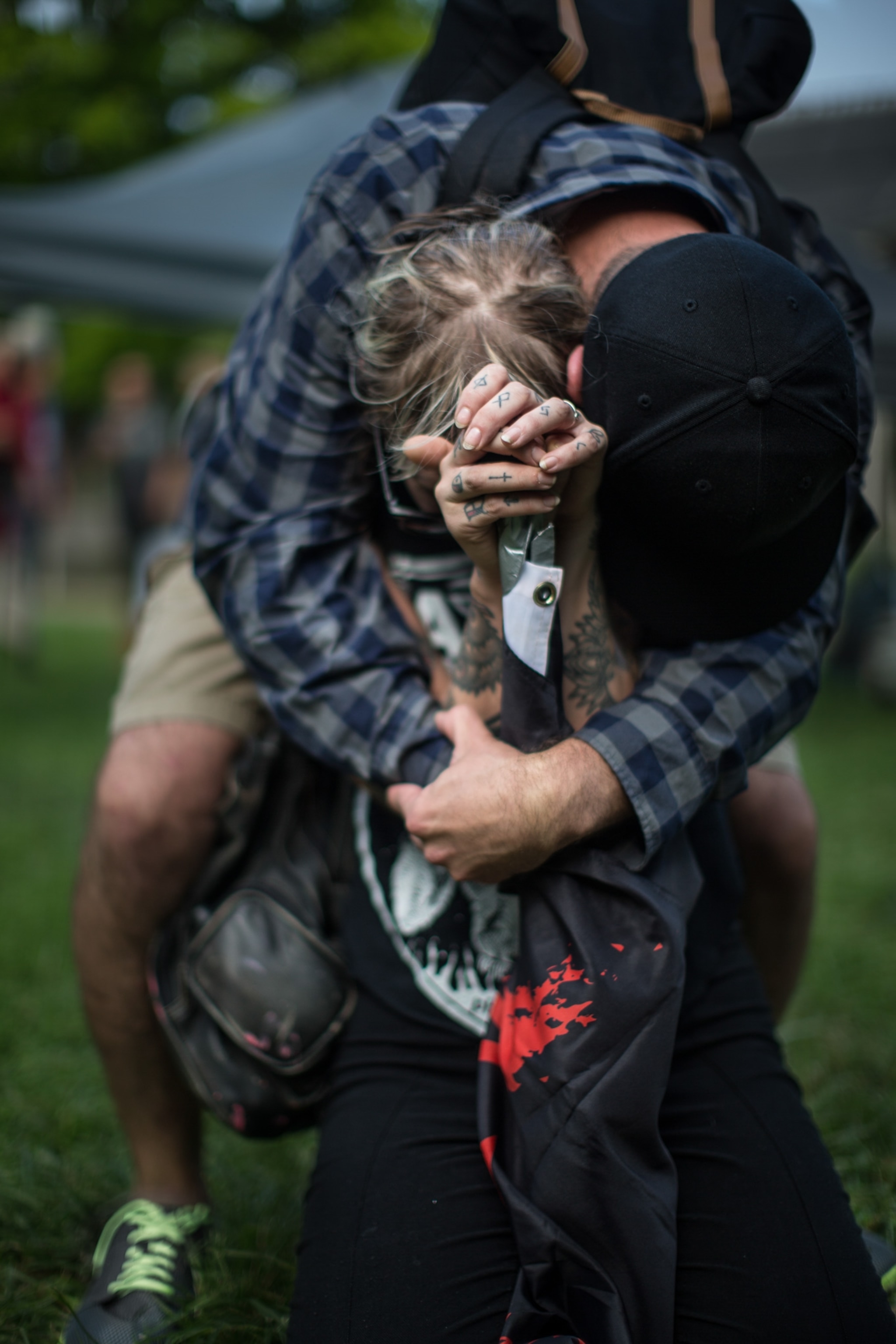
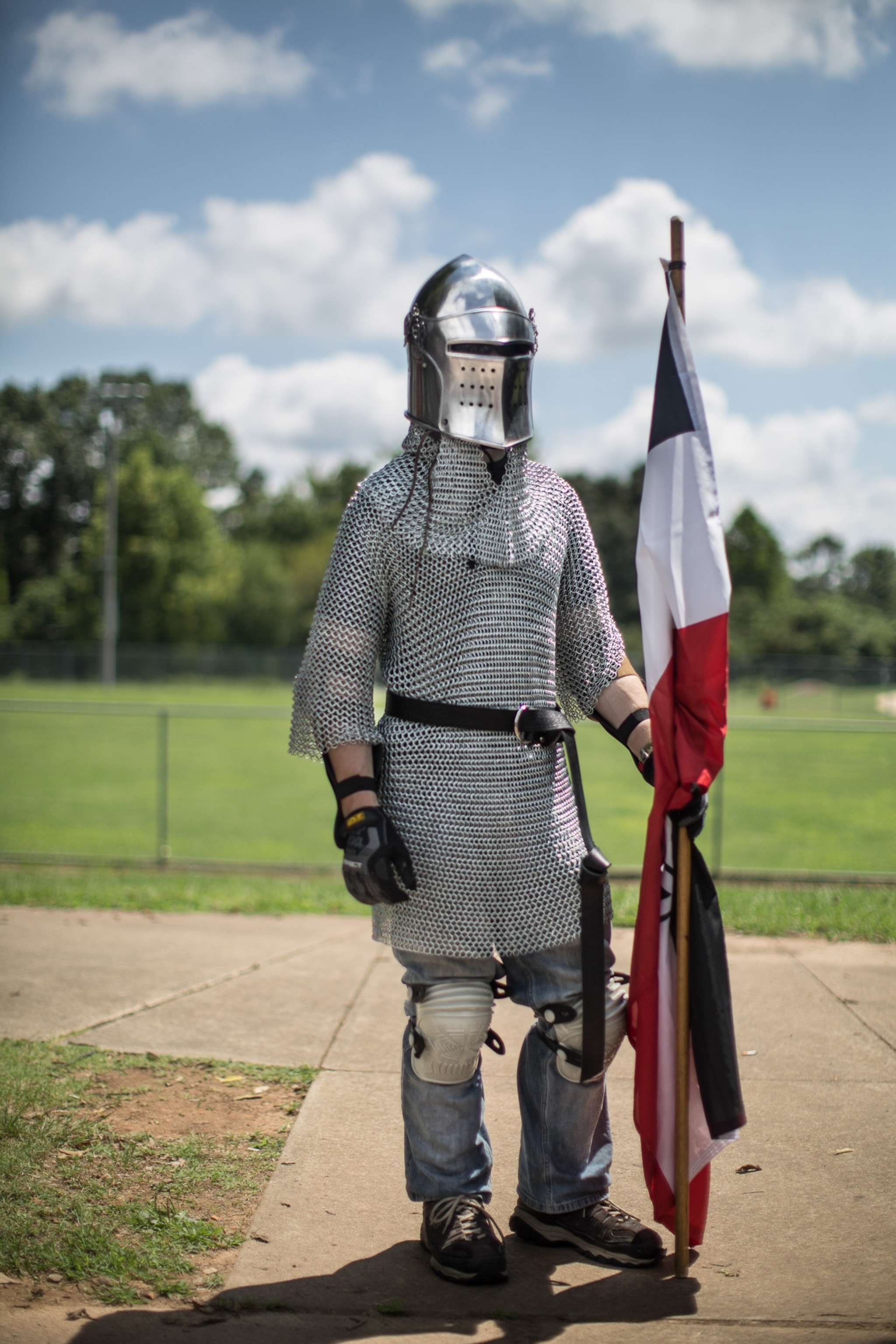
Witnesses on the scene were shaken and distraught. They told us a car had plowed through a crowd of counter-protesters tossing people in every direction. Later in the day, we learned 19 people were injured and one was killed. The next day the name of the deceased was released: Heather Heyer. She was a 32-year-old paralegal, a young woman passionate about social justice.
The last words she posted on her Facebook page had been: “If you’re not outraged, you’re not paying attention.”
At dusk on Sunday, my team returned to the corner of 4th Street and Water, but this time for a candlelight vigil where distressed community members gathered to pray, sing songs, and write messages to Heather in chalk on the sidewalk. Earlier in the day, we had reviewed our footage only to realize the morning before we had been standing just feet away from James Fields, the 20-year-old Nazi-sympathizer from Ohio and the suspect who was charged with second-degree murder in connection with Heyer’s death. The events of Saturday also took the lives of two Virginia State Police troopers whose helicopter crashed when they were called in to assist law enforcement.
Looking back on the unbelievable weekend, the hatred on full display, the violence and the loss of life, Don Gathers stood at the Sunday vigil in a daze. He told us he never imagined more than a year ago, when he joined the commission to examine the General Robert E. Lee statue, that it would lead to such tragedy and heartache in his hometown.
It underscored a truth that I had come to realize on my short journey back to Charlottesville. These memorials and statues are more than just bronze and granite; they symbolize our long and imperfect road to the present. But to reconsider and debate who we honor and why, and the message that sends, is a worthy and important exercise.
A professor told me that to judge most historical figures by today’s standards is futile, just as many of our contemporary leaders are unlikely to withstand the judgment of future generations. But our history should be the history of all of us, not just those with the power to record it.
I said at the beginning of this essay that what happened here broke my heart but also filled me with hope. During the three days I was in the city I saw intense hatred and bitterness that provoked outrage and anger. But I also saw kindness, compassion and generosity. Amid the sound and the fury, I saw Muslim, Jewish, black, and white protestors with arms linked forming a human chain.
At the scene of the accident I saw strangers comforting relatives of the injured with a fierce compassion-- as though they were family members. I saw pastors and pedestrians running toward a scene of chaos not knowing what else was about to happen but determined to help.
That day Charlottesville stood up against hate, white supremacy, racism, anti-Semitism, homophobia, and misogynistic rhetoric and said: this is not the world we live in or want to be a part of.
Hate will surface again, we know; but so will its enemies. Just as they did on that muggy Saturday in August in Charlottesville, Virginia.

